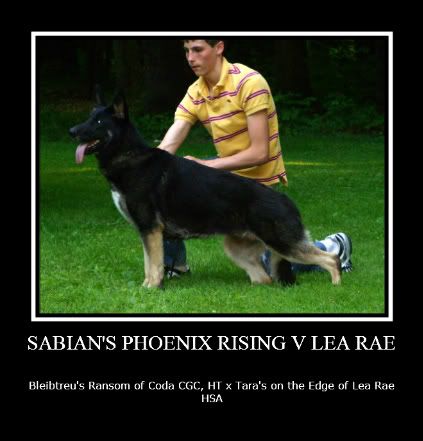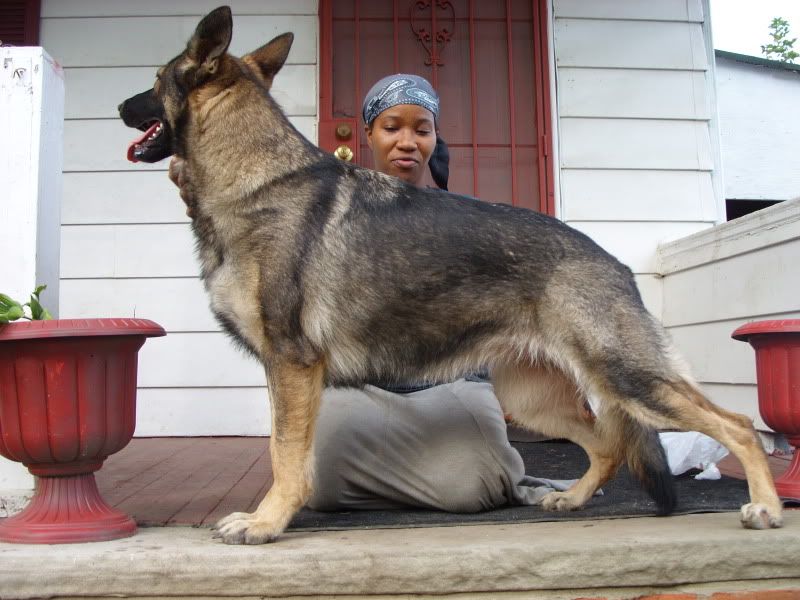Devon's Mom Lauren":3g2cxg55 said:
Hip Dysplasia has been eradicated from the gene pool of the Seeing Eye Inc. in Morristown NJ. Check their website or facebook page for info.
Couldn't find it on their FB but went to their web. this is what I found. still did not see them say they eradicated it. I don't breed a breed that has this issus But a good friend that bred GR gave me all her books and I'll see if I can find the one on HD.
"Canine Hip Screening Protocol Earns Worldwide Respect
One of the most common physical ailments among dogs is a disorder known as hip dysplasia. Generally defined as malformed hip joints, the disorder can often lead to progressive arthritis in the joint, causing a dog to have difficulty rising, lameness in its rear limbs, trouble negotiating stairs, a wobbling gait, and pain.
By the end of the 1970s, The Seeing Eye began formalizing a method to selectively breed out hip dysplasia by taking and evaluating radiographs (x-rays) of dogs' hips at some point between 14 and 16 months of age, then selecting for breeding only those dogs exhibiting the best hip quality. Radiographs, though administered at The Seeing Eye, were sent to the University of Pennsylvania for evaluation. Although the incidence of hip dysplasia fell markedly over the next several years, progress eventually hit a plateau. But then a veterinary surgeon at the University, Dr. Gail Smith, approached The Seeing Eye with an alternative.
He was experimenting with taking hip x-rays with the legs of the dogs in a neutral, standing position, rather than in the traditional pose, lying down with legs extended. While he had a new method of measuring hip laxity, what he needed in order to establish its efficacy was data, and The Seeing Eye had plenty of dogs to provide that resource. In the late '80s, The Seeing Eye began funding Dr. Smith's work through the Morris Animal Foundation and provided him with radiographs of its dogs positioned using this new procedure.
The test that Dr. Smith developed as a result, called PennHIP®, is now the standard used not only by The Seeing Eye but, increasingly, by veterinarians worldwide. Still, Dr. Dolores Holle and her team at The Seeing Eye were the first to employ PennHIP technology outside the University of Pennsylvania.
"This has become the most effective means available of preventing what is a major health issue for dogs," says Dr. Smith. Most recently, veterinarians in New Zealand have accepted PennHIP as the protocol for hip screening, and Australia is running parallel PennHIP and standard tests. Comparisons will be compiled for five years to determine the protocol moving forward.
"It started as just an idea, and now there are more than 90,000 dogs in the database," says Dr. Smith. "I always say that ideas are cheap … it's the proof of an idea that is expensive, and it was the 'proof' that The Seeing Eye funded and made happen. If that money didn't come, we would not have been able to accomplish what we did. I am forever grateful not just to The Seeing Eye but all the wonderful people there that cared enough to make this happen."










































![FHQHTH Faux Raccoon Fur Purse Fuzzy Handbags for Women Evening Handbags Al alloy Shoulder Strap [Rabbit White]](https://m.media-amazon.com/images/I/31mEJhLS1lL._SL500_.jpg)












